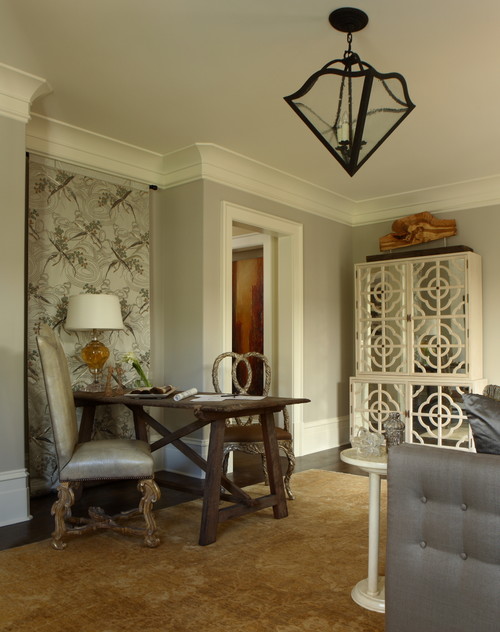Even though you adore it when you see it, how well-versed are you in ornate molding? In fact, it might be difficult to name them all. Is it a crown or a dentil? A chair rail or a casing? Even if you can recognize this unique millwork, it’s possible that you won’t see the genuine article—carefully made from hardwoods—very often in the future.
That’s because, according to Karen Gray-Plaisted of Design Solutions KGP, builders today frequently economize on this element due to cost. However, she observes, “decorative molding transforms a room from a rhombus to one that has character and charm.”
Although decorative molding has been used for generations, it is more popular than ever. The history of ornate moldings and the different varieties to look for when looking for a home or renovating are provided here.
Molding history
According to Beverly Solomon of the same design business, “Molding has long brought depth, elegance, and finish to Victorian and Colonial-style homes.”
The Greeks, Romans, and our colonists all used hand planes with special blades to cut out the shapes for this intricacy. By the time of the Industrial Revolution, the cost of machine-cut moldings had decreased, and people were buying them in large quantities.
According to Gray-Plaisted, decorative molding includes baseboards around the perimeter of a room, molding around the ceiling, trim around doors and windows, and any kind of paneling, including shiplap and wainscoting.
She continues by saying that it can be formed of fiber-reinforced polystyrene, stone, softwoods, hardwoods, composite materials, and polyurethane. According to Solomon, modern composites are easier to cut, prime, and paint than actual wood because they don’t need to be sanded or primed.
6 Types of Decorative Molding to Glam Up Walls and Ceilings
- Crown molding
- Chair rail
- Picture frame molding
- Casing
- Dentil
1. Crown Moulding
Crown molding is exactly what it sounds like—a decorative element that extends outward from the ceiling and walls where they meet. It is also known as cornice molding, and its style can range from complex with decorative cutouts to straightforward and linear (Shaker).
According to Jeff Valenti, senior merchant of millwork at the Home Depot, this molding can hide flaws and is designed to sit on both the wall and the ceiling to improve its visibility from below. Corinthian, Doric, contemporary, and art deco are just a few of the various architectural eras represented by the hundreds of patterns and styles that are available.
2. Chair Rail Moulding

The purpose of this thin wooden element, which horizontally divides a space at heights between 36 and 45 inches, is to shield the wall from dents and scratches brought on by chairs.
According to Kevin Busch, vice president of operations at Mr. Handyman, “a chair rail makes a visual divide in the room or wall and can be a terrific way to incorporate two paint colors, one above the rail and the other below.”
3. Picture frame Moulding
Picture frame moldings are exactly what they seem to be: empty square or rectangular rectangles. They smartly accentuate the walls in stairwells and hallways. On a plain wall expanse, picture frame molding can be added to simulate paneling. The ceiling can also be decorated with frame molding to resemble a tray or coffered ceiling.
According to Busch, chair rails frequently go with wainscot, the wooden panels that are typically put to the bottom level of walls. The chair rail can be used to crown a wainscoting and offers the same benefits as a separate rail while giving the wall another decorative element.
4. Casing Moulding
Busch adds that casing is the molding that surrounds window or door openings and can be used both inside and outside.
Although deeper designs are available to provide a decorative shelf, typical casings in these locations are 2 to 3 inches wide.
“By framing them in a smooth continuous surface that can be adjusted to emphasize the room’s design, casing refines the appearance of doors and windows,” continues Valenti.
5. Dentil Moulding

Dentil molding is a decorative pattern made up of teeth-shaped blocks that has its roots in Greek architecture. Historic homes, especially Victorian ones, include dentil around doors and ceilings inside as well as outside. Dentil was typically constructed into crown molding (along rooflines). Dentil is a more expensive application since it requires labor-intensive installation and more expensive production. (Each block must be meticulously cut, measured, and positioned individually.)
6. Egg and Dart Moulding

Look for egg-shaped ovals scattered with arrows, anchors, or V-shaped darts around a ceiling to spot this ornate molding. A decorative element called an egg and dart, also known as an egg and tongue, is frequently used in conjunction with crown molding. Acanthus leaves and rope detail are two further elaborate motifs in the same style.
To know more about How to Apply Building Permit in the Philippines
To know other construction guides, tips, and methodology for beginners, veterans, and contractors, please see here.
To know the flood prone areas in the Philippines, Top 10 Flood-Prone Areas to Live in the Philippines.
To know more about Concrete Hollow Blocks, Simple Reasons Why Hollow Blocks are Highly Used in the Philippines
To know more about Surface Materials, What is the Best Surface Material: Laminate Vs. Veneer Vs. Solid Wood
To know more about House Construction, How to Build a House Cheaply: 7 Simple Ways to Save on Home Construction


